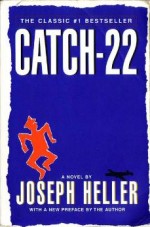Burn this paper

Banned Book Week has existed since 1982 to serve as a reminder of the fight against ignorance and censorship. Certain groups have banned, or attempted to ban, each of the books on the following list. Some of these books are a light read, while some are beautiful expressions of the innermost workings of the human spirit. All of them have been deemed offensive by people (like the Nazis) who would prefer a world where everything they didn’t agree with was destroyed (burned in the case of books). As Americans who believe in the First Amendment, we must all be aware of the struggle to preserve our freedom of speech. So take part in Banned Book Week, which runs from Sept. 29 to Oct. 6.
“Intellectual freedom implies a circle, and that circle is broken if either freedom of expression or access to ideas is stifled.” – The Intellectual Freedom Manual
And Tango Makes Three, by Justin Richardson and Peter Parnell; published in 2005.For a book banned for being “anti-family,” among other things, And Tango Makes Three by Justin Richardson and Peter Parnell mentions the word family seven times within the first three pages. The children’s book is the true story of two male chinstrap penguins named Roy and Silo, who are paired up in New York City’s Central Park Zoo. When Roy and Silo realize that they cannot lay an egg like the other penguin couples, the zookeeper gives them one that was abandoned by its family. This egg hatches into Tango, who becomes the only penguin in the zoo with two daddies.The book was seen as advocating homosexuality and was condemned as inappropriate for the young children likely to read it. Author Justin Richardson defended the book on Web site tolerance.org by saying, “And Tango Makes Three is not an argument or a position paper,” he said. “It is a picture book written to entertain children and to help parents introduce the fact of gay families to their youngsters in an age-appropriate way.” This book could open discussions and promote tolerance in young children. Exposing children to the idea of alternative families is something that should be encouraged, not banned.-Beth Damiano
Tropic of Cancer, by Henry Miller; published in 1934.Banned in the United States for 27 years, Tropic of Cancer is the steamy novel by Henry Miller that challenged the U.S. pornography laws in the 1960s. Published in Paris in 1934, its eventual publication in the United States in 1961 led to an obscenity trial that was overturned in the U.S. Supreme Court landmark case Grove Press, Inc. v. Gerstein.A mixture of fiction and memoir, the novel depicts the adventures of American writer Henry Miller (the author obviously didn’t use his creativity for developing the main character’s name). Set in Paris in the 1930s, Miller spends his time as an expatriate wandering around the European city and having sex with many women, especially prostitutes.Tropic of Cancer was designated as “one of the 10 or 20 greatest novels of the century” by Norman Mailer, and more than likely served as inspiration for other hard-drinking and womanizing authors, such as Charles Bukowski. The novel was followed by Miller’s sequel, Tropic of Capricorn, which follows the author through 1920s New York. For readers interested in the sex life of Henry Miller, the movie Henry and June is recommended.-Amy Rumball
The Catcher in the Rye, by J.D. Salinger; published in 1951.One of Time magazine’s all-time 100 novels, J.D. Salinger’s The Catcher in the Rye is a satirical and controversial masterpiece. Its use of obscene language and adult situations caused this book to be banned or censored in many countries for various periods of time since its debut in 1951. The Catcher in the Rye is a short novel that follows narrator Holden Caulfield in his fourth flunk out of a prep school and his travels to New York City. The story spans several days, and within this time, he stays in numerous hotels, pays for a prostitute (but does not indulge in her services), tries to run away with a friend who greatly annoys him, becomes harassed by another friend and reconnects with his younger sister – all the while avoiding telling his parents that he flunked out once again. Salinger’s novel is important because it introduces young readers to the unreliable narrator – a narrator whose words must be taken with a grain of salt. Although there is a great deal of cursing, the offensive situations are no more graphic than what’s playing on primetime television. The vocabulary is elementary enough for a middle school student, but the themes and symbols are advanced enough for a college student. The Catcher in the Rye is an important novel due to both its uniqueness of characters and complex symbolism.-Amy Mariani






